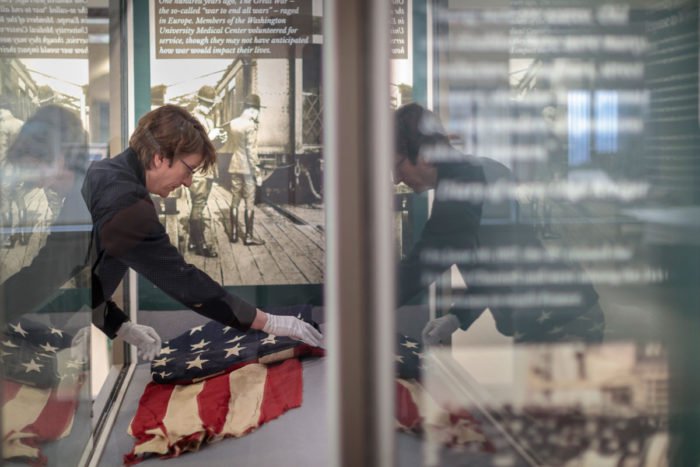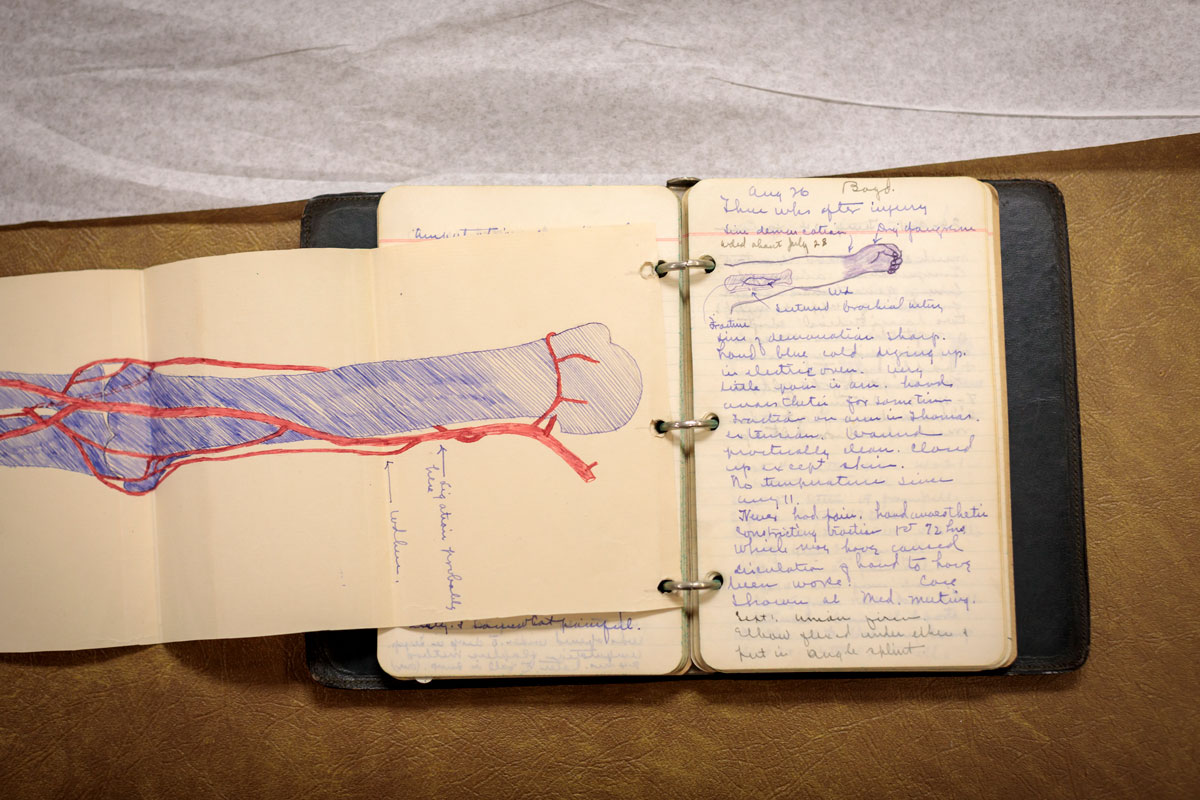Lecture, exhibit to highlight university’s medical role during World War I
Faculty staffed Base Hospital 21 in Normandy region of France
 Matt Miller
Matt MillerPhilip Skroska, an archivist of visual and graphic archives at Bernard Becker Medical Library, arranges an exhibit that includes a flag that flew at Base Hospital 21 in Rouen, France, in World War I. Base Hospital 21 was an Army medical unit organized at Washington University School of Medicine in St. Louis.
“Can your unit go to Europe and how soon?” U.S. Army Surgeon General William Gorgas asked Washington University’s Base Hospital 21 organizer and director Fred Murphy in spring 1917.
“Yes, in one week,” Murphy replied.
— From “Activities of Base Hospital 21,” a report written in 1919 for the St. Louis chapter of the American Red Cross
Months before the United States entered World War I in 1917, faculty members on the Washington University Medical Campus already were determined to help any soldiers wounded during combat. Fred Murphy, MD, the inaugural head of the Department of Surgery, led the university’s efforts by mobilizing physicians and nurses and by organizing Base Hospital 21, which would be stationed in the Normandy region of France.
The American flag that hung at Base Hospital 21 throughout its two-year deployment is one of the WWI artifacts on display in the Bernard Becker Medical Library’s Glaser Gallery, on the library’s seventh floor. The exhibit also features a soldier’s dog tags, a steel camouflage helmet, an ambulance blueprint and magnified, sepia photos alongside excerpts from letters and diaries written by doctors and nurses at Base Hospital 21.
The exhibit will be on display until June. Kicking it off is the 61st Historia Medica Lecture, “And We Won’t Come Back ‘Till It’s Over, Over There,” by Philip Skroska, Becker’s visual and graphic archivist.
The talk detailing Base Hospital 21’s role in the war will be at 4:30 p.m. Thursday, Feb. 22, in the King Center on Becker’s seventh floor. The event is free and open to the public, and will include a reception in the exhibit area.
Among the topics and anecdotes to be shared:
- Base Hospital 21’s medical volunteers were among the first Americans to reach France.
- Altogether, health-care workers at Base Hospital 21 treated 61,453 patients. At first, the unit cared for a daily average of 25 patients; eventually, that number grew to 90.
- Washington University led in the use of several medical innovations during the war, including the development of an X-ray device that scanned injured soldiers on stretchers as soon as they arrived at Base Hospital 21. This allowed health-care workers to quickly assess injuries while minimizing pain.
- An awkward group physical of medical school faculty by the U.S. Army ultimately created camaraderie at Base Hospital 21, according to an archived account by one of the physicians: “Two unimpressive lieutenants … herded [everyone] … into a chilly clinic room and in a no-nonsense tone, one said, ‘Strip!’… Two dozen of the medical school faculty stepped forward, from the loftiest professors down, naked as frogs, hopping on the cold floor, being inspected, palpated, auscultated and undergoing any other manipulation that occurred to the inquisitors. … It was a leveling experience … it broke down all barriers and began to teach them to live as one happy family for the duration.”








